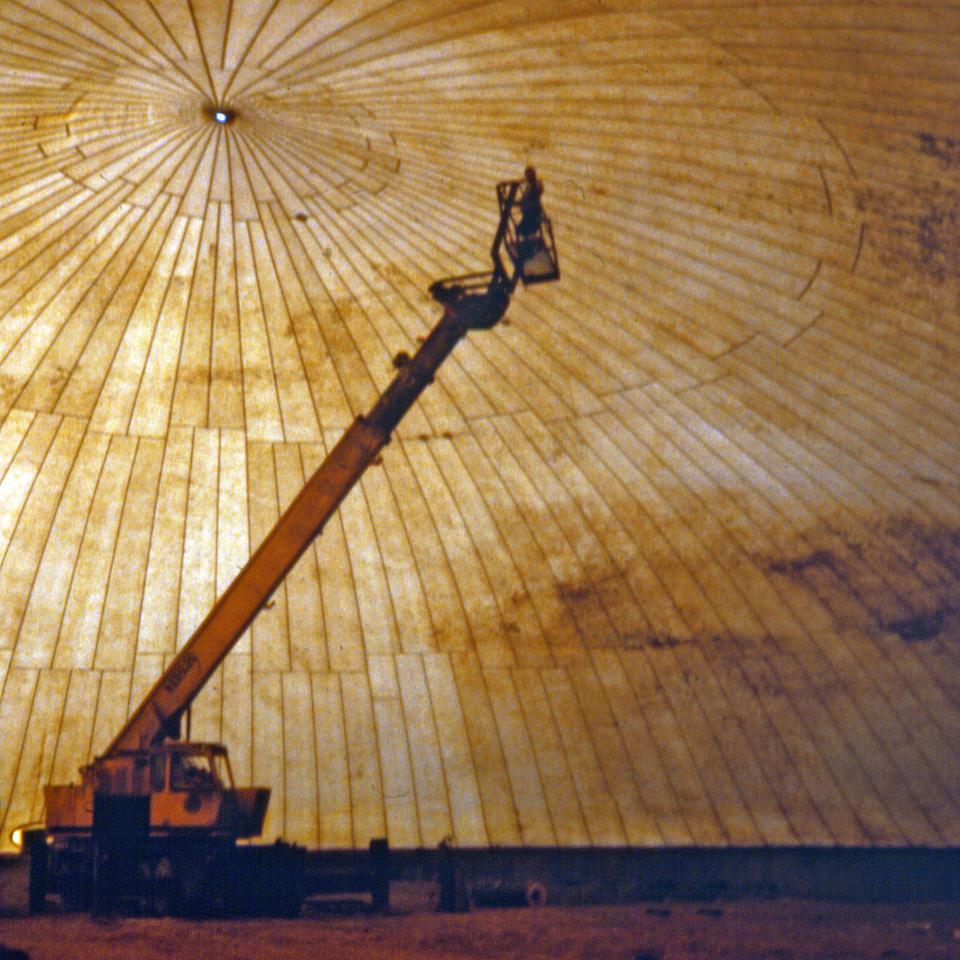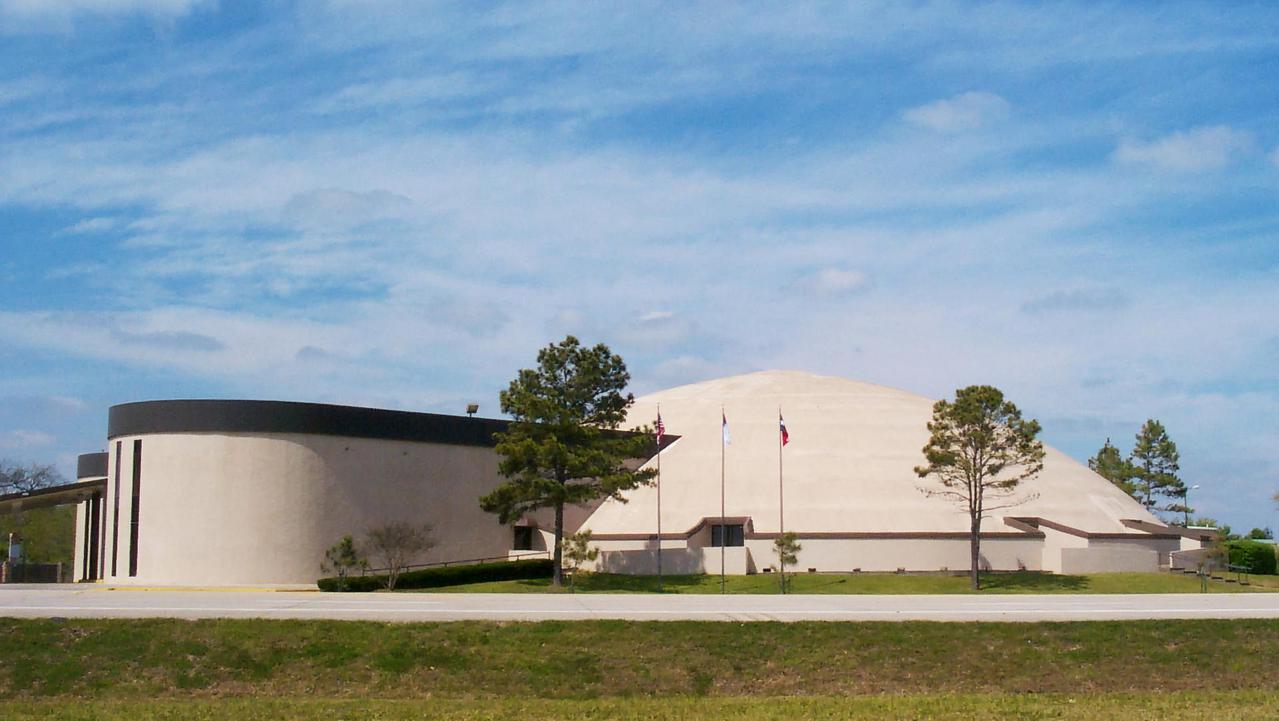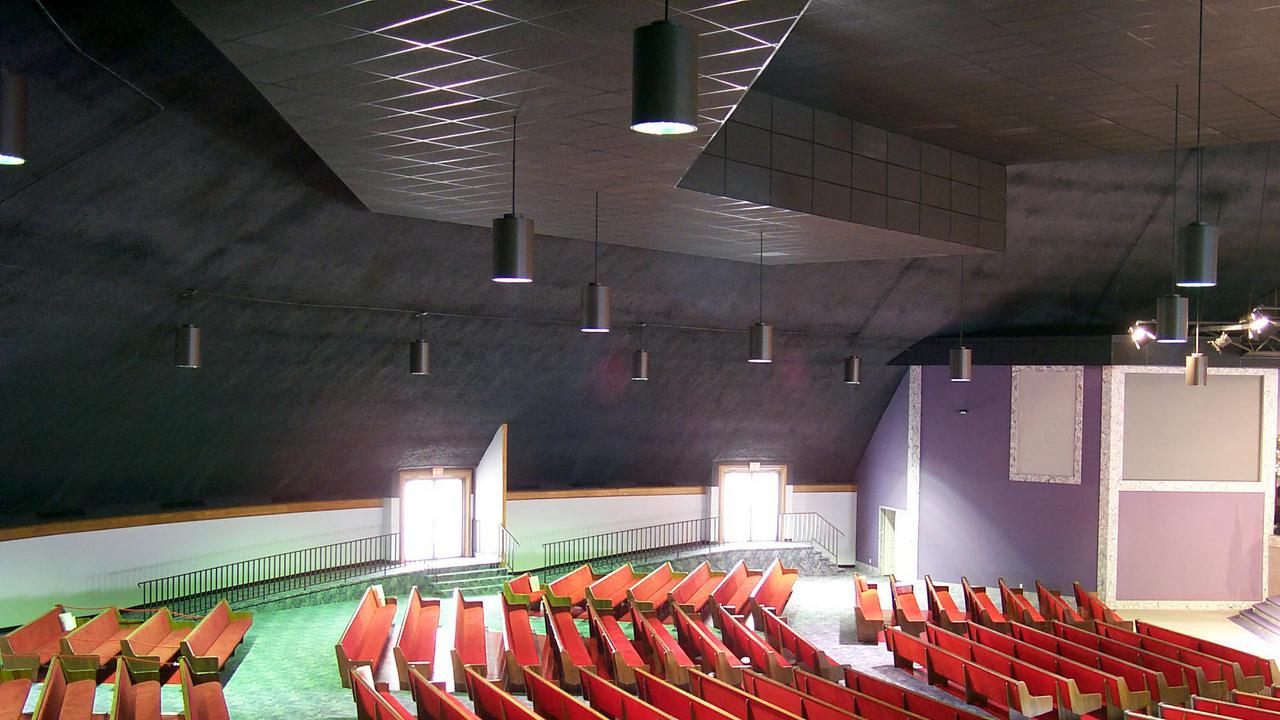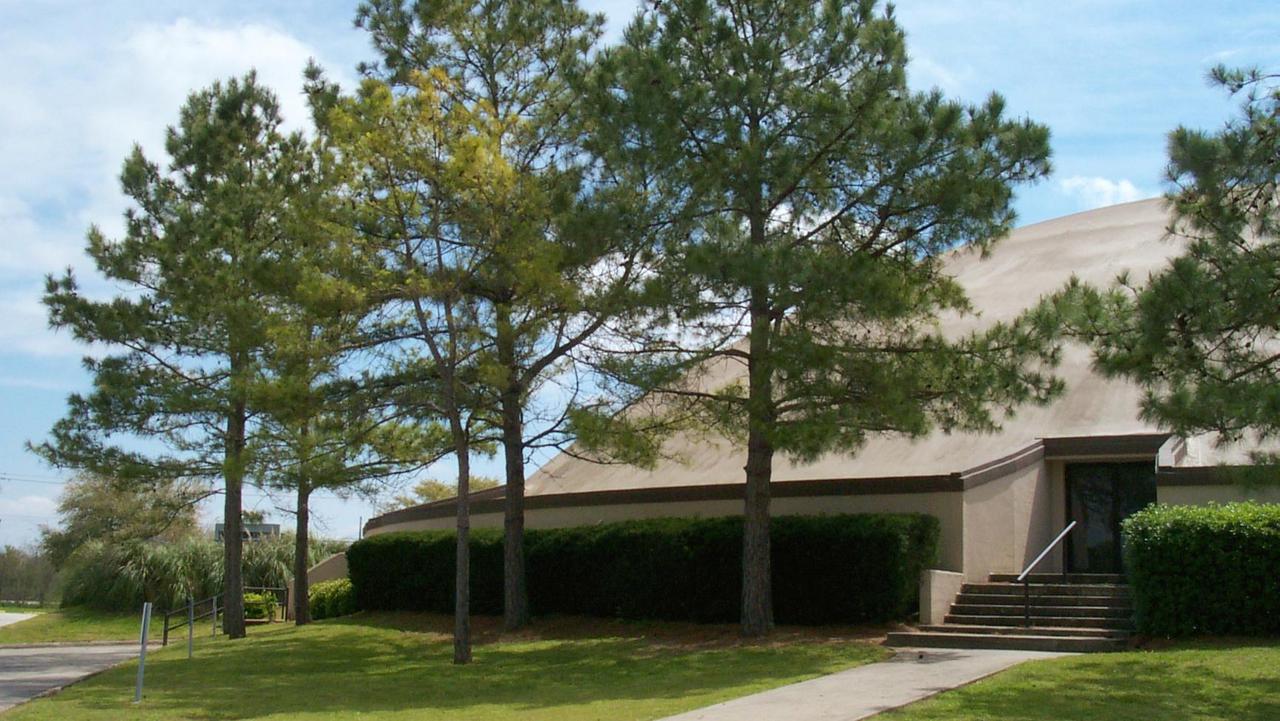Throwback: Houston Area Church Is a Dome of Many Firsts

The large, 208-foot diameter dome dominates the area while flying over the job site. The entrance towers are small in comparison.

Inside the inflated Airform a crane hoists a worker to inspect the membrane. The inflated structure is nearly five stories tall.
Today’s throwback story is from 1984 with a dome of firsts—Maranatha Church—the first Monolithic Dome over 200-feet diameter, the first dome proving energy savings enough to pay for the building, and the first high capacity auditorium with seating for over 4,000.
Pastor Ronnie Trice founded the Maranatha Church in 1973. By 1984, his congregation had outgrown their 600-person capacity chapel. He needed an affordable solution for a giant sanctuary. He found it in the Monolithic Dome.
The design was simple. Two large, round towers flanked the main entryway leading through a foyer into a 208-foot diameter by 48-foot tall dome sanctuary. On one side is a multi-level stage with a baptismal font plus a backstage preparation area. Opposite the stage is a mezzanine structure mostly used for video recording and broadcasting sermons and other events. Pews dominate the bulk of the dome’s floor space.
Dome construction went well, and soon the largest Monolithic Dome ever built was finished. Trice named it the Maranatha Temple and later the Maranatha Church. It’s a landmark building in Mont Belvieu, Texas, and even sheltered parishioners during Hurricane Rita.
Today, it’s called the Hillside Church with Ronnie’s son, Mark, as Senior Pastor.

From the ground, the dome appears smaller — a common optical illusion for all domes because the viewing angle cannot take in the whole structure at once.

The dome was painted black with the lights, acoustic ceiling, ducts, and stage lights all hung directly from the dome. There are exits all around the sanctuary.
And while it serves as a legacy of faith, it was also a springboard for larger domes to come. At 208-feet diameter by 48-feet tall, the dome is actually the top portion of a 273-foot diameter hemisphere. It proved the technology and engineering. Larger domes would follow with some well over 300 feet in diameter.
It also provided unique insight into Monolithic Dome energy savings. Trice would run the air-conditioning during the week to cool the dome by five degrees. On Sunday, with thousands attending services, the concrete dome would absorb heat from the congregation. Temperatures would rise, but the congregation stayed comfortable. Then they would run the AC during the week to remove the excess heat stored in the dome’s thermal mass.
The dome required less AC equipment because it didn’t need to cool a whole congregation during the Texas summers. Instead, the dome played an active role in keeping the structure cool. For years they never used the heater. When they finally had cold enough weather to try the heater, they couldn’t figure out how to turn it on.
Trice compared his energy bills with pastors in other similar-sized churches. The energy savings were substantial, to say the least, with Trice estimating a year-over-year savings of $60,000. If that money were properly invested, the energy savings could pay for the dome in a little less than 14 years.

